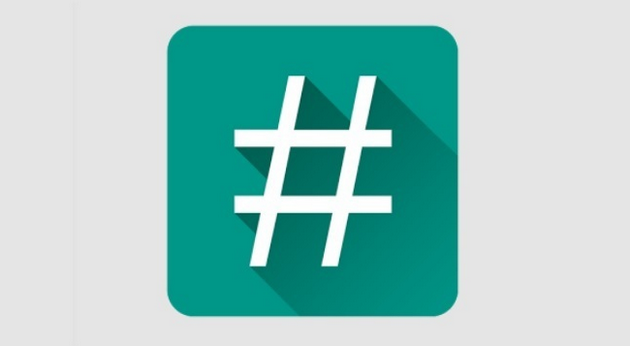Last Updated on May 13, 2023 by Mathew Diekhake
Flashing the SuperSU is the most popular method for getting root access on Android. It’s been the go-to tool for many years now and is the successor to SuperUser.
SuperUser worked much the same way as SuperSU, but Superuser required the user always to grant apps root permissions each time they were being used. SuperSU, on the other hand, will remember the root privileges for applications that you’ve chosen to grant or deny, so there is no manual work on your part.

It’s also possible to open the SuperSU application and change the permissions manually if you want. For example, if there is an application that you’ve installed and you granted it root access but now wish you didn’t because you don’t think it’s trustworthy, you can enter SuperSU and change the permissions so that app no longer has root access to your mobile device.
Installing/flashing SuperSU is always done from a custom recovery image. Today’s leading custom recovery image is TWRP. There are advantages to installing TWRP over other custom recovery images, such as you’ll increase your chances of being able to install more ROMs. The SuperSU itself doesn’t usually mind what custom recovery image you have installed. As long as it comes with the ability to flash zip files, which all custom recovery images built to date do, then it will manage to get your root access.
The point of having root access on the Android operating system is so that you can start installing root applications. There are roughly a few hundred root applications that people from all over the world are downloading, installing, and finding useful. A root app is an application, usually found on the Google Play Store or the XDA-Developers web forum, that cannot run until it gets access to the root file system.
Often root applications prove more useful than regular apps that do a similar thing. An example of this is applications for backing up. The best applications for backing up devices that don’t have root access is Helium for Android. Helium is no match for Titanium Backup though—an application that rooted users can install and run. Titanium has more features and offers better backing up capabilities thanks to its chance of using the root file system.
Download SuperSU (All Versions)
- eu.chainfire.supersu_2.50-250_minAPI7(nodpi).apk
- eu.chainfire.supersu_2.51-251_minAPI7(nodpi).apk
- eu.chainfire.supersu_2.52-252_minAPI7(nodpi).apk
- eu.chainfire.supersu_2.56-256_minAPI7(nodpi).apk
- eu.chainfire.supersu_2.60-260_minAPI7(nodpi).apk
- eu.chainfire.supersu_2.61-261_minAPI7(nodpi).apk
- eu.chainfire.supersu_2.62-262_minAPI7(nodpi).apk
- eu.chainfire.supersu_2.64-264_minAPI7(nodpi).apk
- eu.chainfire.supersu_2.65-265_minAPI7(nodpi).apk
- eu.chainfire.supersu_2.66-266_minAPI7(nodpi).apk
- eu.chainfire.supersu_2.67-267_minAPI7(nodpi).apk
- eu.chainfire.supersu_2.68-268_minAPI7(nodpi).apk
- eu.chainfire.supersu_2.69-269_minAPI7(nodpi).apk
- eu.chainfire.supersu_2.70-270_minAPI7(nodpi).apk
- eu.chainfire.supersu_2.71-271_minAPI7(nodpi).apk
- eu.chainfire.supersu_2.72-272_minAPI7(nodpi).apk
- eu.chainfire.supersu_2.74-274_minAPI7(nodpi).apk
- eu.chainfire.supersu_2.76-276_minAPI7(nodpi).apk
- eu.chainfire.supersu_2.77-277_minAPI7(nodpi).apk
- eu.chainfire.supersu_2.78-278_minAPI7(nodpi).apk
- eu.chainfire.supersu_2.78-SR1-278_minAPI7(nodpi).apk
- eu.chainfire.supersu_2.78-SR2-278_minAPI7(nodpi).apk
- eu.chainfire.supersu_2.78-SR3-278_minAPI7(nodpi).apk
- eu.chainfire.supersu_2.78-SR4-278_minAPI7(nodpi).apk
- eu.chainfire.supersu_2.78-SR5-278_minAPI7(nodpi).apk
- eu.chainfire.supersu_2.79-279_minAPI7(nodpi).apk
- eu.chainfire.supersu_2.79-SR1-279_minAPI7(nodpi).apk
- eu.chainfire.supersu_2.79-SR2-279_minAPI7(nodpi).apk
- eu.chainfire.supersu_2.79-SR3-279_minAPI7(nodpi).apk
- eu.chainfire.supersu_2.79-SR4-279_minAPI7(nodpi).apk
- eu.chainfire.supersu_2.80-280_minAPI9(nodpi).apk
- eu.chainfire.supersu_2.81-281_minAPI9(nodpi).apk
- eu.chainfire.supersu_2.82-SR1-282_minAPI9(nodpi).apk
- eu.chainfire.supersu_2.82-SR2-282_minAPI9(nodpi).apk
- eu.chainfire.supersu_2.82-SR3-282_minAPI9(nodpi).apk
- eu.chainfire.supersu_2.82-SR4-282_minAPI9(nodpi).apk
- eu.chainfire.supersu_2.82-SR5-282_minAPI9(nodpi).apk
- eu.chainfire.supersu_2.82.1-282_minAPI9(nodpi).apk
- eu.chainfire.supersu-2.44-244-minAPI7.apk
- eu.chainfire.supersu-2.45-245-minAPI7.apk
- eu.chainfire.supersu-2.46-246-minAPI7.apk
- eu.chainfire.supersu-2.48-248-minAPI7.apk
- eu.chainfire.supersu-2.49-249-minAPI7.apk
This article was last updated on August 5, 2022.
Related Tutorials
- How to Download SuperSU APK to get Root Access to Android 8.0 (Oreo)
- How to Download SuperSU APK to get Root Access to Android 8.1 (Oreo)
- How to Download SuperSU APK to get Root Access to Android 7.1.2 (Nougat)
- How to Download SuperSU APK to get Root Access to Android 7.1.1 (Nougat)
- How to Download SuperSU APK to get Root Access to Android 7.1 (Nougat)

January 12, 2020 @ 13:10
My smartphone is unlocked and rooted. I have seen a notification on my status bar saying that a SuperSU app has been updated. I did not install this app, nor do I know anything about it. My assumption is that it is related to getting root access. Apart from keeping this app on my phone, is there anything else I need to do with it? How important is it to be updating the SuperSU app? I usually turn updates off as I don’t particularly appreciate wasting my battery on needless, countless updates that developers continue to roll out every other day.
January 12, 2020 @ 13:19
SuperSU is indeed related to root access. While you don’t always necessarily have to have SuperSU on your smartphone — there are other similar tools that work just as well — SuperSU, if you have it, is what is granting the root permissions to the operating system and allowing you to use the apps that require those root permissions before they can run.
Out of all the tools that help you gain root access, SuperSU is the most popular. KingUser — the way you would get root access with KingRoot — is no longer still granting people root access on newer versions of Android. KingRoot hasn’t been updated for years. It doesn’t seem as though the KingRoot developers can use the same methods they once did, which is forcing the tool to no longer be relevant.
SuperSU also has its limitations — if you want to be able to use Android Pay and other apps that Android deems too insecure to use with root access, you need to use Magisk instead — but it’s still working for all those who want to use it. It’s just losing popularity as time goes on.
We recommend keeping SuperSU updated but feel free to turn off the updates and just check now and then for SuperSU updates. Updating the app as soon as possible won’t be the difference between having root access and not having it. It will likely work fine still so long as you don’t notice any incompatibilities with apps. As soon as you do notice incompatibilities, remember to update it.